Sangarapillai Lambotharan
DSFL: A Dual-Server Byzantine-Resilient Federated Learning Framework via Group-Based Secure Aggregation
Sep 10, 2025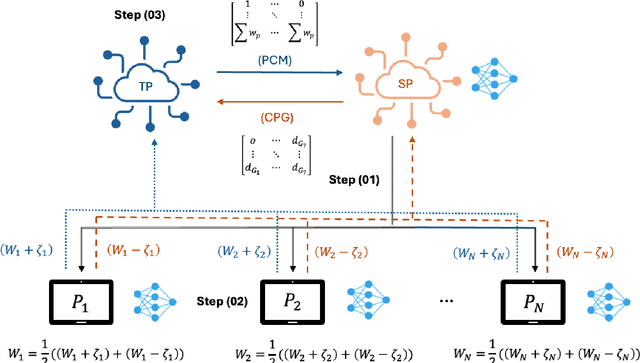
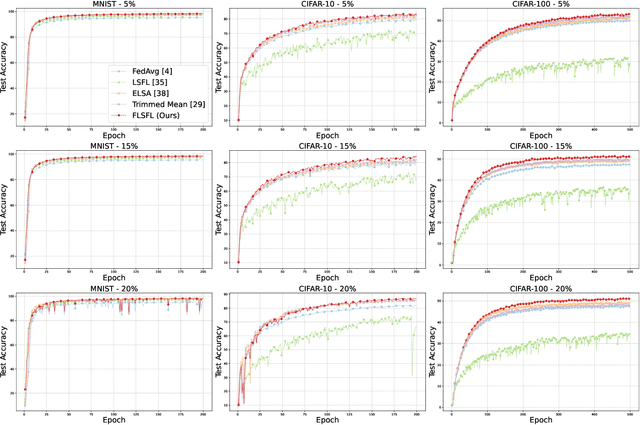
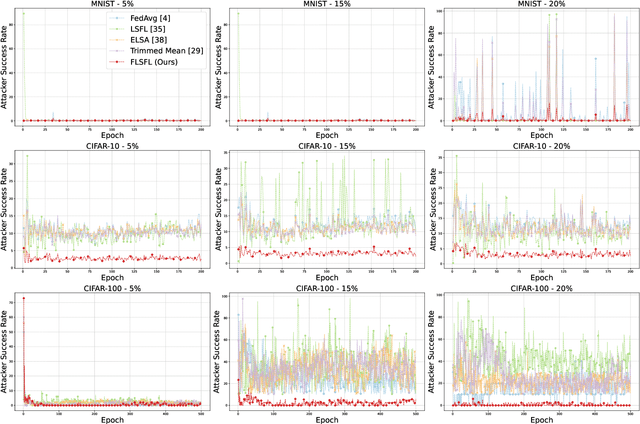
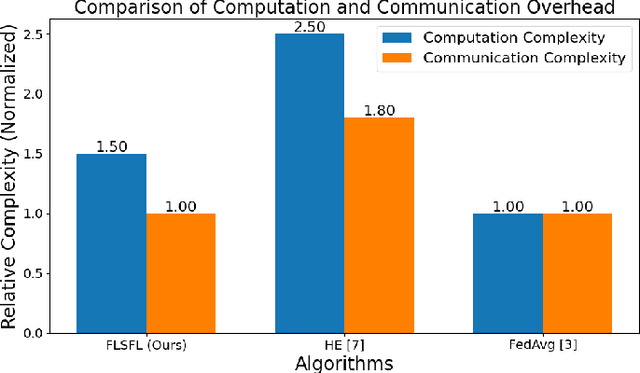
Abstract:Federated Learning (FL) enables decentralized model training without sharing raw data, offering strong privacy guarantees. However, existing FL protocols struggle to defend against Byzantine participants, maintain model utility under non-independent and identically distributed (non-IID) data, and remain lightweight for edge devices. Prior work either assumes trusted hardware, uses expensive cryptographic tools, or fails to address privacy and robustness simultaneously. We propose DSFL, a Dual-Server Byzantine-Resilient Federated Learning framework that addresses these limitations using a group-based secure aggregation approach. Unlike LSFL, which assumes non-colluding semi-honest servers, DSFL removes this dependency by revealing a key vulnerability: privacy leakage through client-server collusion. DSFL introduces three key innovations: (1) a dual-server secure aggregation protocol that protects updates without encryption or key exchange, (2) a group-wise credit-based filtering mechanism to isolate Byzantine clients based on deviation scores, and (3) a dynamic reward-penalty system for enforcing fair participation. DSFL is evaluated on MNIST, CIFAR-10, and CIFAR-100 under up to 30 percent Byzantine participants in both IID and non-IID settings. It consistently outperforms existing baselines, including LSFL, homomorphic encryption methods, and differential privacy approaches. For example, DSFL achieves 97.15 percent accuracy on CIFAR-10 and 68.60 percent on CIFAR-100, while FedAvg drops to 9.39 percent under similar threats. DSFL remains lightweight, requiring only 55.9 ms runtime and 1088 KB communication per round.
A Neural Rejection System Against Universal Adversarial Perturbations in Radio Signal Classification
Jun 13, 2025Abstract:Advantages of deep learning over traditional methods have been demonstrated for radio signal classification in the recent years. However, various researchers have discovered that even a small but intentional feature perturbation known as adversarial examples can significantly deteriorate the performance of the deep learning based radio signal classification. Among various kinds of adversarial examples, universal adversarial perturbation has gained considerable attention due to its feature of being data independent, hence as a practical strategy to fool the radio signal classification with a high success rate. Therefore, in this paper, we investigate a defense system called neural rejection system to propose against universal adversarial perturbations, and evaluate its performance by generating white-box universal adversarial perturbations. We show that the proposed neural rejection system is able to defend universal adversarial perturbations with significantly higher accuracy than the undefended deep neural network.
Attention-based Adversarial Robust Distillation in Radio Signal Classifications for Low-Power IoT Devices
Jun 13, 2025Abstract:Due to great success of transformers in many applications such as natural language processing and computer vision, transformers have been successfully applied in automatic modulation classification. We have shown that transformer-based radio signal classification is vulnerable to imperceptible and carefully crafted attacks called adversarial examples. Therefore, we propose a defense system against adversarial examples in transformer-based modulation classifications. Considering the need for computationally efficient architecture particularly for Internet of Things (IoT)-based applications or operation of devices in environment where power supply is limited, we propose a compact transformer for modulation classification. The advantages of robust training such as adversarial training in transformers may not be attainable in compact transformers. By demonstrating this, we propose a novel compact transformer that can enhance robustness in the presence of adversarial attacks. The new method is aimed at transferring the adversarial attention map from the robustly trained large transformer to a compact transformer. The proposed method outperforms the state-of-the-art techniques for the considered white-box scenarios including fast gradient method and projected gradient descent attacks. We have provided reasoning of the underlying working mechanisms and investigated the transferability of the adversarial examples between different architectures. The proposed method has the potential to protect the transformer from the transferability of adversarial examples.
FAS-LLM: Large Language Model-Based Channel Prediction for OTFS-Enabled Satellite-FAS Links
May 14, 2025Abstract:This paper proposes FAS-LLM, a novel large language model (LLM)-based architecture for predicting future channel states in Orthogonal Time Frequency Space (OTFS)-enabled satellite downlinks equipped with fluid antenna systems (FAS). The proposed method introduces a two-stage channel compression strategy combining reference-port selection and separable principal component analysis (PCA) to extract compact, delay-Doppler-aware representations from high-dimensional OTFS channels. These representations are then embedded into a LoRA-adapted LLM, enabling efficient time-series forecasting of channel coefficients. Performance evaluations demonstrate that FAS-LLM outperforms classical baselines including GRU, LSTM, and Transformer models, achieving up to 10 dB normalized mean squared error (NMSE) improvement and threefold root mean squared error (RMSE) reduction across prediction horizons. Furthermore, the predicted channels preserve key physical-layer characteristics, enabling near-optimal performance in ergodic capacity, spectral efficiency, and outage probability across a wide range of signal-to-noise ratios (SNRs). These results highlight the potential of LLM-based forecasting for delay-sensitive and energy-efficient link adaptation in future satellite IoT networks.
Performance Analysis of Fluid Antenna System Aided OTFS Satellite Communications
May 13, 2025Abstract:Internet-of-Things (IoT) networks typically rely on satellite communications to provide coverage in rural areas. However, high-mobility satellite links introduce severe Doppler and delay spreads, which necessitate the use of orthogonal time frequency space (OTFS) modulation for reliable data transmission. Furthermore, the space and energy constraints on IoT devices make the perfect use case for fluid antenna systems (FAS) due to their mechanical simplicity. Hence, we propose a sophisticated FAS aided OTFS (FAS-OTFS) framework for satellite-based IoT networks. We derive analytical expressions for both the outage probability and ergodic capacity of FAS-OTFS under a general channel model, where the expressions derived are presented in integral form or as analytical bounds for efficient numerical evaluation. Additionally, we investigate a single-path fading scenario, where closed-form expressions are obtained. Our numerical results demonstrate significant performance gains in terms of both the outage probability and capacity compared to conventional OTFS systems, confirming the efficacy of FAS-OTFS in energy-constrained high-mobility environments. Our findings establish FAS-OTFS as a promising candidate for next-generation IoT communications over satellite links.
RIS-Empowered Integrated Location Sensing and Communication with Superimposed Pilots
Apr 05, 2025Abstract:In addition to enhancing wireless communication coverage quality, reconfigurable intelligent surface (RIS) technique can also assist in positioning. In this work, we consider RIS-assisted superimposed pilot and data transmission without the assumption availability of prior channel state information and position information of mobile user equipments (UEs). To tackle this challenge, we design a frame structure of transmission protocol composed of several location coherence intervals, each with pure-pilot and data-pilot transmission durations. The former is used to estimate UE locations, while the latter is time-slotted, duration of which does not exceed the channel coherence time, where the data and pilot signals are transmitted simultaneously. We conduct the Fisher Information matrix (FIM) analysis and derive \text {Cram\'er-Rao bound} (CRB) for the position estimation error. The inverse fast Fourier transform (IFFT) is adopted to obtain the estimation results of UE positions, which are then exploited for channel estimation. Furthermore, we derive the closed-form lower bound of the ergodic achievable rate of superimposed pilot (SP) transmission, which is used to optimize the phase profile of the RIS to maximize the achievable sum rate using the genetic algorithm. Finally, numerical results validate the accuracy of the UE position estimation using the IFFT algorithm and the superiority of the proposed SP scheme by comparison with the regular pilot scheme.
Maximizing Uncertainty for Federated learning via Bayesian Optimisation-based Model Poisoning
Jan 15, 2025Abstract:As we transition from Narrow Artificial Intelligence towards Artificial Super Intelligence, users are increasingly concerned about their privacy and the trustworthiness of machine learning (ML) technology. A common denominator for the metrics of trustworthiness is the quantification of uncertainty inherent in DL algorithms, and specifically in the model parameters, input data, and model predictions. One of the common approaches to address privacy-related issues in DL is to adopt distributed learning such as federated learning (FL), where private raw data is not shared among users. Despite the privacy-preserving mechanisms in FL, it still faces challenges in trustworthiness. Specifically, the malicious users, during training, can systematically create malicious model parameters to compromise the models predictive and generative capabilities, resulting in high uncertainty about their reliability. To demonstrate malicious behaviour, we propose a novel model poisoning attack method named Delphi which aims to maximise the uncertainty of the global model output. We achieve this by taking advantage of the relationship between the uncertainty and the model parameters of the first hidden layer of the local model. Delphi employs two types of optimisation , Bayesian Optimisation and Least Squares Trust Region, to search for the optimal poisoned model parameters, named as Delphi-BO and Delphi-LSTR. We quantify the uncertainty using the KL Divergence to minimise the distance of the predictive probability distribution towards an uncertain distribution of model output. Furthermore, we establish a mathematical proof for the attack effectiveness demonstrated in FL. Numerical results demonstrate that Delphi-BO induces a higher amount of uncertainty than Delphi-LSTR highlighting vulnerability of FL systems to model poisoning attacks.
A General Sensing-assisted Channel Estimation Framework in Distributed MIMO Network
Nov 24, 2024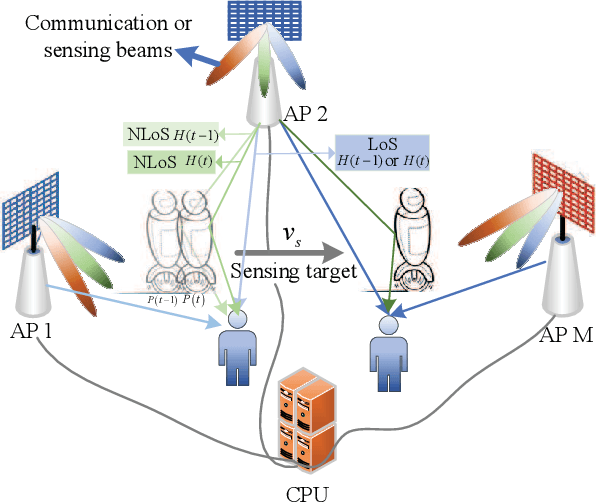
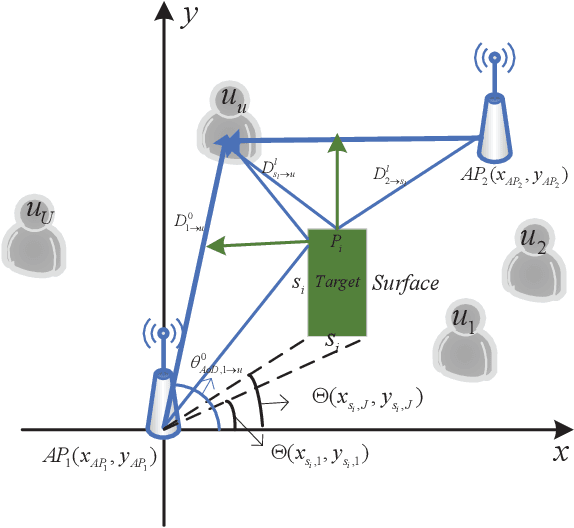
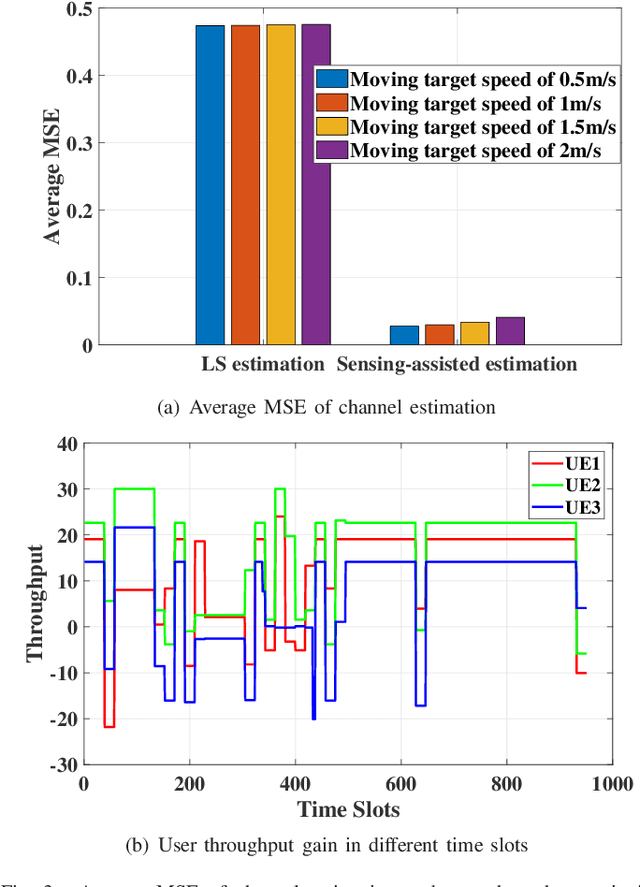
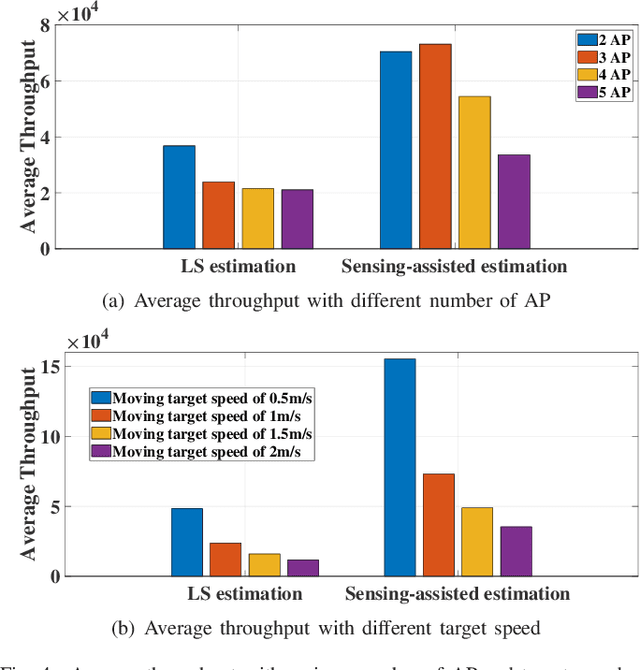
Abstract:Joint sensing and communication (JSC) research direction has been envisioned to be a key technology in 6G communications, which has the potential to equip the traditional base station with sensing capability by fully exploiting the existing wireless communication infrastructures. To further enhance wireless communication performance in JSC, sensing-assisted communication has attracted attention from both industry and academia. However, most existing papers focused on sensing-assisted communication under line-of-sight (LoS) scenarios due to sensing limitations, where the sensing target and communication user remain the same. In this paper, we propose a general sensing-assisted channel estimation framework, where the channel estimation accuracy for both Los and non-line-of-sight (NLoS) are considered. Simulation results demonstrate that our proposed sensing-assisted communication framework achieves higher channel estimation accuracy and throughput compared to the traditional least-square (LS) estimation. More importantly, the feasibility of the proposed framework has been validated to solve the complex channel estimation challenge in distributed multiple input and multiple output (MIMO) network.
Reinforcement Learning-Based Downlink Transmit Precoding for Mitigating the Impact of Delayed CSI in Satellite Systems
Oct 28, 2024



Abstract:The integration of low earth orbit (LEO) satellites with terrestrial communication networks holds the promise of seamless global connectivity. The efficiency of this connection, however, depends on the availability of reliable channel state information (CSI). Due to the large space-ground propagation delays, the estimated CSI is outdated. In this paper we consider the downlink of a satellite operating as a base station in support of multiple mobile users. The estimated outdated CSI is used at the satellite side to design a transmit precoding (TPC) matrix for the downlink. We propose a deep reinforcement learning (DRL)-based approach to optimize the TPC matrices, with the goal of maximizing the achievable data rate. We utilize the deep deterministic policy gradient (DDPG) algorithm to handle the continuous action space, and we employ state augmentation techniques to deal with the delayed observations and rewards. We show that the DRL agent is capable of exploiting the time-domain correlations of the channels for constructing accurate TPC matrices. This is because the proposed method is capable of compensating for the effects of delayed CSI in different frequency bands. Furthermore, we study the effect of handovers in the system, and show that the DRL agent is capable of promptly adapting to the environment when a handover occurs.
Enhancing Federated Learning Convergence with Dynamic Data Queue and Data Entropy-driven Participant Selection
Oct 23, 2024Abstract:Federated Learning (FL) is a decentralized approach for collaborative model training on edge devices. This distributed method of model training offers advantages in privacy, security, regulatory compliance, and cost-efficiency. Our emphasis in this research lies in addressing statistical complexity in FL, especially when the data stored locally across devices is not identically and independently distributed (non-IID). We have observed an accuracy reduction of up to approximately 10\% to 30\%, particularly in skewed scenarios where each edge device trains with only 1 class of data. This reduction is attributed to weight divergence, quantified using the Euclidean distance between device-level class distributions and the population distribution, resulting in a bias term (\(\delta_k\)). As a solution, we present a method to improve convergence in FL by creating a global subset of data on the server and dynamically distributing it across devices using a Dynamic Data queue-driven Federated Learning (DDFL). Next, we leverage Data Entropy metrics to observe the process during each training round and enable reasonable device selection for aggregation. Furthermore, we provide a convergence analysis of our proposed DDFL to justify their viability in practical FL scenarios, aiming for better device selection, a non-sub-optimal global model, and faster convergence. We observe that our approach results in a substantial accuracy boost of approximately 5\% for the MNIST dataset, around 18\% for CIFAR-10, and 20\% for CIFAR-100 with a 10\% global subset of data, outperforming the state-of-the-art (SOTA) aggregation algorithms.
 Add to Chrome
Add to Chrome Add to Firefox
Add to Firefox Add to Edge
Add to Edge